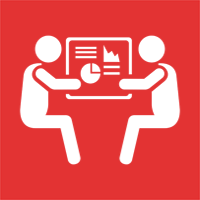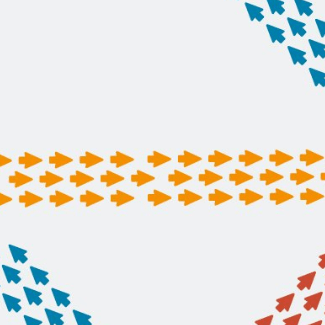How the Managed Services Economy is Shaking Up Marketing

By Santo Criscuolo, Amplero
We are in the midst of an economic earthquake. The seismic plates within nearly every industry are shifting.
Netflix. Uber. Spotify. Google.
These are four of the companies rapidly becoming a modern disruptive canon of business school case studies. They signify a decisive shift away from an economy built on traditional ownership to one centered in access and experience.
On-demand economy. Sharing economy. Service economy. While there are many names for the new economic model, the core essence is consistent: an empowered consumer prioritizes spending with brands that consistently provide individualized, unobtrusive, and highly contextual interactions.
Although the fundamental four P's-product, price, promotion, and placement-were sound in a transactional consumer model, they are rapidly decreasing in relevance as the typical consumer journey is broken up into hundreds of micro-moments across multiple devices and mediums.
And, digital disrupters like Netflix and Spotify are riding that wave of loyalty because they predicted and defined the changing consumer appetite toward an individualized approach.
In their 2015 Global Media Report, McKinsey forecasts that 71 percent of consumer spending on media will be on access instead of ownership by just 2018.
In the old model, marketers are immersed in elongated brand and product planning cycles focused on guiding consumers to make a purchase decision and then repeat the buying process. In addition, it was not that long ago where marketers did this in a relatively siloed world, shielded behind the focus group mirror and distanced from many actual consumer touchpoints. Simplistically, marketing would build the brand, but the sales team would drive the purchase.

However, to thrive in a digital, access and experience-driven economy, marketers need to shift their focus away from traditional metrics like brand awareness and affinity to transformative key performance indicators (KPIs), including the following:
- Average Revenue Per User (ARPU)
In a managed services world, this is a mission-critical metric. Increase it, and you'll be shaking your CEO's hand at the annual meeting. Decrease it, and you'll be scrambling to find new campaign strategies that resonate with your customer base before the next reporting cycle. Ignore it, and you'll be looking for your next job.
- Retention Rate
Similar to ARPU, this metric is crucial for subscription model businesses. Unfortunately, most companies aren't able to predict churn risk until it's too late. Running a user retention campaign when the user has already reached a break point with your service is a losing proposition. However, what if you could use behavioral data points to predict churn propensity further in advance? Suddenly, your retention efforts have a much greater chance of success.
- Customer Lifetime Value
If you're not able to calculate your customer lifetime value and use it to inform your current marketing campaigns, this is a stop and fix. Understanding customer lifetime value enables marketers to drill down and recognize the economic value of each customer to make sound decisions about how much to invest in acquisition and retention. It also allows you to tailor and test messaging across your different customer dimensions.
Personalized interactions at scale require digital intelligence engines
Beyond the evolution of metrics, marketers need to be able to deliver real-time, highly contextual messages to their customers. Unfortunately, the volume of data and decisioning required to run personalized marketing at scale has surpassed human capability.
While marketing automation tools are powerful in the B2B world, many top B2C companies struggle to implement them at scale across large consumer bases. The manual labor required to set rules and offline modeling simply moves at too slow of a pace.
Instead, the most successful brands-Spotify, Netflix, Uber-are taking advantage of advances in machine learning technology to simultaneously manage millions of personalized customer experiences. In addition, a byproduct of this shift away from manual labor is that it frees marketers up to focus on strategy and creative versus pulling data reports.
Amidst the economic shake-up facing today's marketers, it's the leaders who can harness modern disruptive technology and sound creative strategy who will finally deliver on the promise of personalization. About the Author
 Santo Criscuolo has extensive experience helping large B2C brands, such as AT&T Wireless, T-Mobile, Nike, Adidas, Weight Watchers, Disney and Microsoft, leverage digital marketing to acquire, engage, and retain their customers. As VP of Sales at Amplero, he currently empowers Fortune 500 marketers to utilize machine learning and continuous optimization technology to drastically improve customer retention, increase average revenue per user, and deliver personalized 1:1 customer experiences at scale. Contact him at santoc@amplero.com.
Santo Criscuolo has extensive experience helping large B2C brands, such as AT&T Wireless, T-Mobile, Nike, Adidas, Weight Watchers, Disney and Microsoft, leverage digital marketing to acquire, engage, and retain their customers. As VP of Sales at Amplero, he currently empowers Fortune 500 marketers to utilize machine learning and continuous optimization technology to drastically improve customer retention, increase average revenue per user, and deliver personalized 1:1 customer experiences at scale. Contact him at santoc@amplero.com.









